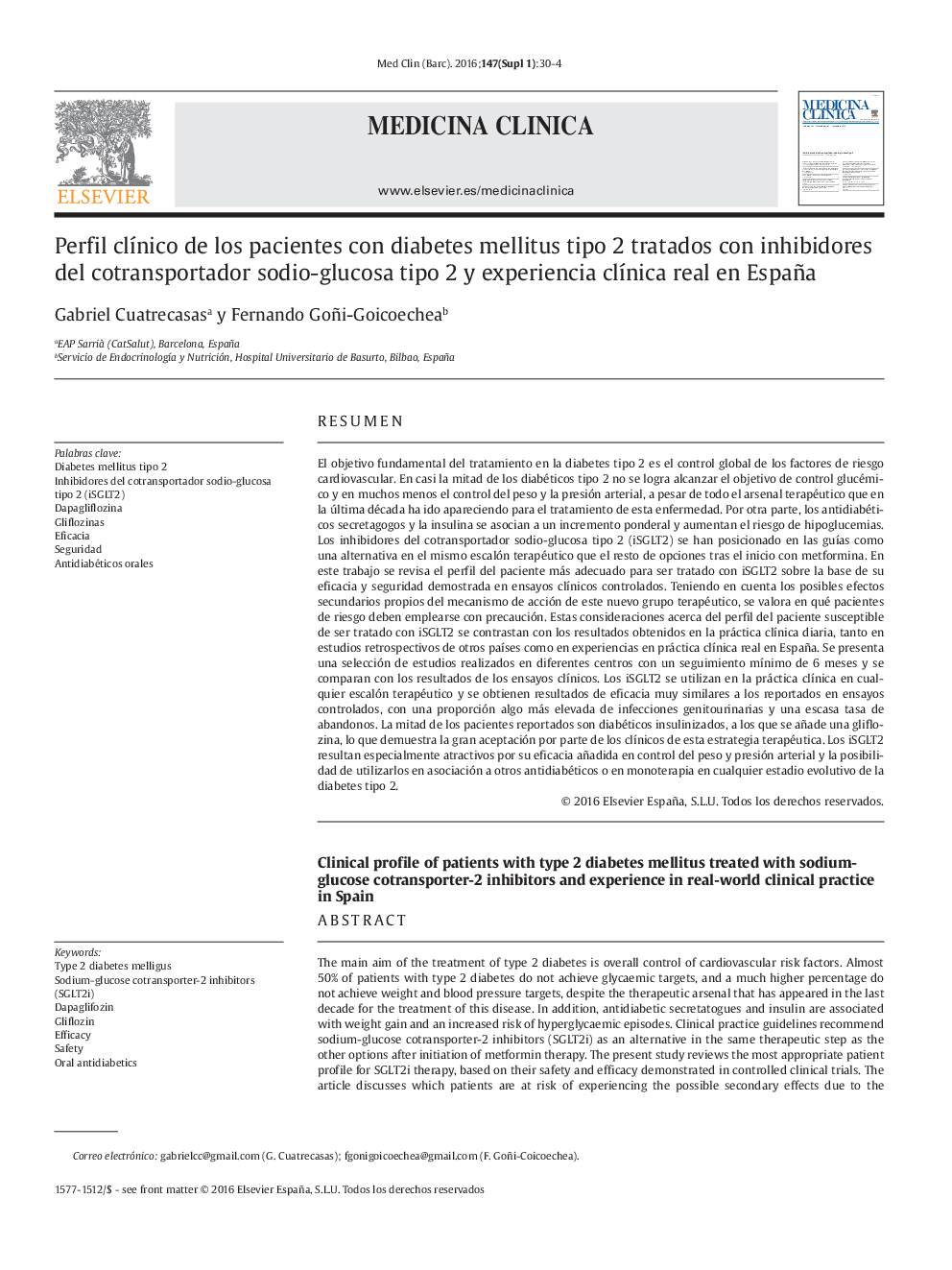| Article ID | Journal | Published Year | Pages | File Type |
|---|---|---|---|---|
| 5680955 | Medicina Clínica | 2016 | 5 Pages |
Abstract
The main aim of the treatment of type 2 diabetes is overall control of cardiovascular risk factors. Almost 50% of patients with type 2 diabetes do not achieve glycaemic targets, and a much higher percentage do not achieve weight and blood pressure targets, despite the therapeutic arsenal that has appeared in the last decade for the treatment of this disease. In addition, antidiabetic secretatogues and insulin are associated with weight gain and an increased risk of hyperglycaemic episodes. Clinical practice guidelines recommend sodium-glucose cotransporter-2 inhibitors (SGLT2i) as an alternative in the same therapeutic step as the other options after initiation of metformin therapy. The present study reviews the most appropriate patient profile for SGLT2i therapy, based on their safety and efficacy demonstrated in controlled clinical trials. The article discusses which patients are at risk of experiencing the possible secondary effects due to the mechanism of action of this new therapeutic class, in whom SGLT2i should be used with caution. These considerations on the profile of patients suitable for SGLT2i therapy are contrasted with the results obtained in daily clinical practice, both in retrospective studies from other countries and from real-world experiences in Spain. This article presents a selection of studies performed in distinct centres with a minimum follow-up of 6 months and compares their results with those from clinical trials. SGLT2i are used in clinical practice in any therapeutic step and the efficacy results are very similar to those reported by controlled clinical trials, with a slightly higher proportion of genitourinary infections and a low dropout rate. Half the reported patients are diabetics receiving insulin therapy plus a gliflozin, showing the wide uptake of this therapeutic strategy by clinicians. SGLT2i are especially attractive due to their additional effectiveness in weight and blood pressure control and the possibility of using them in association with other antidiabetic agents or in monotherapy in patients at any stage of type 2 diabetes.
Keywords
Related Topics
Health Sciences
Medicine and Dentistry
Medicine and Dentistry (General)
Authors
Gabriel Cuatrecasas, Fernando Goñi-Goicoechea,
